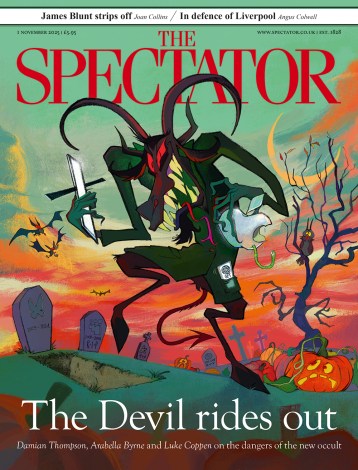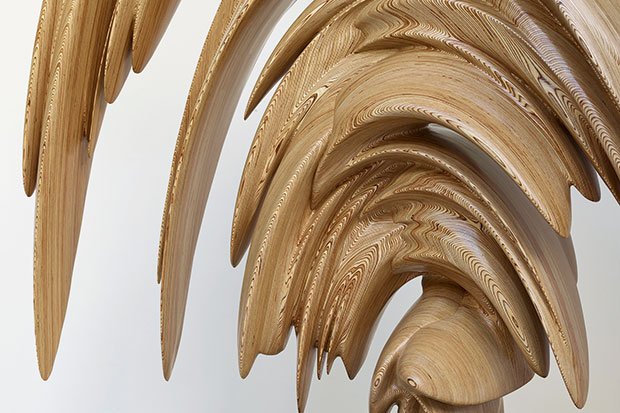Until earlier this year, a squat sculpture nestled rather unobtrusively outside 20 Manchester Square in Marylebone, an address once made famous by the cover of a number of albums by the Beatles. The building has since been renovated into smart, slightly anonymous offices and the sculpture suited it. Few knew that it was a work by Tony Cragg, who towards the end of the 1980s was one of Britain’s best known artists, winning the Turner Prize in 1988 and representing the country at the Venice Biennale the same year. Last winter the sculpture, titled ‘Under Circumstances’, was taken away. There was no fanfare or report as to why, or where, it had gone.
It would have been easy to conclude that this was fair enough. After his high point of the late 1980s, Cragg quickly faded from the art-world stage, retreating to Germany (he moved there in the late 1970s) where he turned out disappointingly anodyne sculptures that adorned plazas and lobbies around the world without ever being particularly noticed or loved. However, this would be to ignore the way in which the British art world has come back to sculpture and assemblage, and in particular to work with poetic associations. The type of works that Cragg, when not churning out works for corporates, has been making for years.
Visitors to Cragg’s solo exhibition at the Lisson Gallery are greeted by a series of increasingly odd forms. Three rusty skeletal sculptures perch in the old gallery’s front room, flotsam from another world. The main room of that gallery has two organic-looking aluminium forms. Their peeling paint and sudden deep hollows suggest that the flesh of whatever creatures these might be has long since fallen off. Over the road in the gallery’s new space is a series of tall, precariously looming works. Many seem to take one curvilinear form and twist it, repeat it and stack it until the object reaches the limit of that form. These are sculptures made of aluminium, wood and bronze but they hark back to Cragg’s early practice of assemblage in which he used seemingly random everyday materials. With the odd exception, the pieces in Cragg’s current exhibition avoid the repetitive, corporate nature of the works that saw him disappear off the art-world radar for 20 years. In place of that is a genuine idiosyncrasy that culminates in a bronze work called ‘We’, which looks like a very large pineapple composed of repeated parts of Cragg’s head erupting in different states of definition over its surface. Noses and eyes poke through the front, ears out of the sides like a sculptural vision of the poster for Spike Jonze’s Being John Malkovich.
The very fact that the Lisson Gallery has chosen to exhibit Cragg during Frieze is telling. This is the slot that galleries reserve for their major exhibition of the year in order to take advantage of collectors and curators from around the world who visit London during Frieze Week. Over at White Cube in Bermondsey, there is an exhibition of work by Antony Gormley who, along with Cragg, Richard Deacon, Anish Kapoor, Alison Wilding and Shirazeh Houshiary, was part of a movement labelled New British Sculpture in the early 1980s. This was a group of artists who returned to the use of traditional materials and fabrication (rather than simply putting things next to each other as conceptual and minimalist artists favoured). They also returned to narrative with metaphoric and figurative imagery, the ambition of which could at times lead to bombast. Anish Kapoor recently revealed, on the Radio 4 programme The Reunion, the thinking behind ‘Marsyas’, his 2003 Tate Modern Turbine Hall installation: ‘Modesty aside, I wanted to make a wonder of the world.’ Similarly, Gormley’s habit of repeatedly making sculptures based on the dimensions of his own body have led to a certain amount of art-world sniggering. His new White Cube exhibition is filled with over-sized stylised figurative monuments that are based on Gormley’s dimensions. There are also little shapes of buildings which perhaps suggest that Gormley is the art world’s equivalent of Godzilla. The show culminates with ‘Run’, a cast-iron tunnel whose external shape is the stylised contours of Gormley’s torso, meaning that viewers are invited to stroll through the inner space of the artist, which is dark, slightly dull and a dead end.
Leaving aside the occasional egocentric moment, there’s a compelling case that sculpture, or more specifically the object, once more occupies a central place in the British contemporary art scene. The Turner Prize shortlist features four artists, all of whom turn to the three-dimensional at some point in their practice. Helen Marten and Michael Dean are perhaps the most sculptural of the four, with Marten representing the tendency in contemporary practice to collide images with incongruous objects and Dean the most recognisably a sculptor. Earlier this month the shortlist was announced for the Hepworth Prize for Sculpture, the first art prize in the country to focus solely on sculpture (Marten features on this shortlist
as well).
Informing this revival is a set of critical theories called Speculative Realism, as well as the related field, Object-Orientated Theory. This is a way of thinking that few outside art school will have heard of, but that has been very influential in art schools throughout Britain and Europe in recent years. While the specifics of the theories are largely baffling, the central message is a focus on the primacy of objects (rather than humans) and the mysterious and unknowable depth of their meanings. Cue lots of artists making objects that are wilfully obscure, while strongly signalling that they have layers of meaning within them. And cue lots of curators lining up to write texts about the essential unknowability of these objects, and a decent number of collectors buying these works, happy because while the works look visually pleasing one does not have to struggle to think about what they mean (as this is unknowable).
This is the context in which Cragg’s work has returned from obscurity and become unexpectedly relevant. Modern British art has always been stronger on the three-dimensional front — Moore, Hepworth, the Geometry of Fear group, Caro, King and New British Sculpture provide an intellectually more robust line-up than, say, the Camden School Group, Bacon, Freud, the Glasgow Boys and Gary Hume. Perhaps it is in the history of modern and contemporary British art that one can really find a march of the makers. The return of artists such as Cragg, and the return to the object on the part of young artists fired up by poetically inclined if largely incoherent critical theory, should be welcomed.






Comments